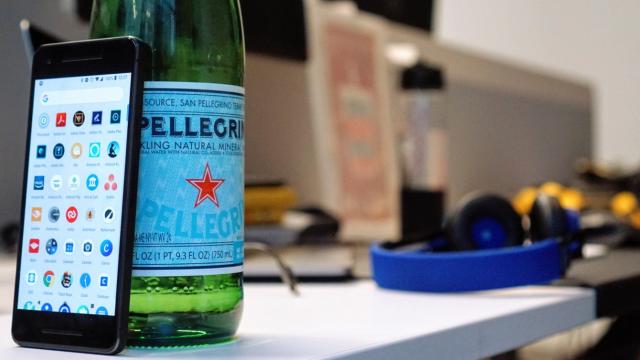Your new smartphone might be missing a headphone jack, but it probably has a cool new feature to make up for it: Water resistance. Google’s Pixel 2 and Pixel 2 XL smartphones are the latest smartphones from the search engine giant that ditch the 3.5mm jack (boosting the effectiveness of its water resistance efforts) in favour of dust and water resistance. But there’s more than one way to classify a dust or water resistant device. Here’s how to determine how durable your new smartphone is without employing a bucket of sand and a garden hose for testing.
What’s an IP Rating?
The Google Pixel 2, along with Apple’s trio of new iPhones and Samsung’s Galaxy Note8, are all water and dust resistant. They all have Industrial Protection (also known as IP) rankings indicating what will or won’t enter the device in terms of foreign bodies (such as dust, sand and small tools) and moisture (such as exposure to rain, or an hour-long ocean submersion). An increasing number of high-end smartphones are adding water and dust resistance to their list of features.
The Pixel 2, iPhone X and iPhone 8 have a protection rating of IP67, while the Samsung Galaxy Note8 has a rating of IP68. Optional information included in IP ratings can indicate whether a device is also resistant to mechanical impacts such as drops and dings, or other adverse conditions (such as high voltages).
What Those Ratings Actually Mean and How to Read Them
The First Digit:
The first number in an IP rating indicates its level of solid particle protection. For smartphones, a solid particle protection rating of 6 means your device is dustproof, and undergoes a vacuuming process to prevent intrusion. Tote your phone to the beach, shoot some close-up photos of your feather dusting technique, or take some selfies on a sand dune. A rating of 5 means your device is only somewhat dust resistant, and should still be functional if dust, sand or other foreign bodies get inside. Any number below 5 means a device is not certified to protect against dust, and is susceptible to intrusion from anything from ants to wires to fingers.
If your IP rating has an X where a number should be, that indicates the device was not tested for either dust or liquid ingress protection, and should not be considered suitable for those conditions. Avoid the sand dunes.
The Second Digit:
The second number in an IP rating indicates its level of liquid ingress protection. If you’ve ever taken in your phone for repairs only to discover some water damage thanks to your steamy shower, you can thank your device’s inability to stop water from getting inside. The Google Pixel 2 has a liquid ingress protection rating of 7, meaning it can survive your morning showers, as well as all-out immersion in water up to a metre deep for 30 minutes, giving you more than enough time to ditch the trousers and jump in the water after your phone.
Just because your phone can survive a dip in the pool doesn’t mean you should immediately start taking Aquaman cosplay photos. The water may affect how your touchscreen operates, or render it inoperable as long as it’s submerged. Samsung’s Galaxy Note8 has a liquid ingress protection rating of 8, meaning it can survive, at minimum, in water up to 1.5m deep for 30 minutes. The particular conditions under which IPX8 devices are suitable should be indicated by the manufacturer. No matter the liquid ingress protection rating, if your smartphone falls into a pool of salt water, you should rinse it with fresh water to prevent corrosion.
Additional Letters:
You may see additional letters next to a device’s IP rating. The letter “f” indicates a device’s resistance to oil, while the letter “H” indicates a device can withstand high voltages. You probably won’t see these on your smartphone, but other more rugged devices could have additional letters determining how durable they are.

Comments
One response to “What To Know About The Waterproofing On Google’s Pixel 2 And Pixel 2 XL”
I get this is about google phones but you say “along with Apple’s trio of new iPhones and Samsung’s Galaxy Note8, are all water and dust resistant.” why leave Sony out they were one of the first brands to have a decent IP rating would have been the Xperia Z that had an IP rating of 58
What?
Samsung S8/+ have IP68.
Both have a headphone jack.
If anything, on the fact that the S8/S8+/Note 8 all have headphone jacks and are IP68 resistant, while the Pixel 2/Pixel 2 XL/iPhone X/8 do not and are only IP67, you could also say that by removing the jack it reduces the water resistance.
Losing the headphone jack to claim it has benefits of increased water resistance are invalid when the top tier of phones do not represent this statement.
IP in this instance is actually an acronym for Ingress Protection… (not Industrial Protection)
You really should mention that the ratings are done under very specific conditions, such as how the phone is submerged ect